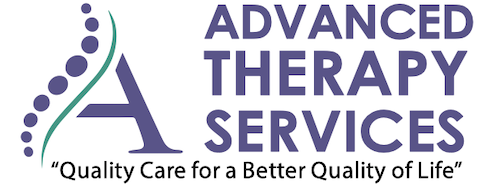WHAT TYPES OF TREATMENTS WILL I RECEIVE?
There are dozens of different types of treatment interventions. Here is a list of treatment interventions:
Active Range of Motion (AROM) – the patient lifts or moves a body part through range of motion against gravity. AROM is usually one of the first modalities prescribed for arthritis.
Active Assistive Range of Motion (AAROM) – therapist-assisted active range of motion. This is usually prescribed for gentle stretching or strengthening for a very weak body part.
Stationary Bicycle – with or without resistance. This is usually prescribed for improving the strength and/or range of motion of the back or lower extremities as well as cardiovascular endurance.
Gait or Walking Training – the analysis of walking problems by visually examining the interaction of the low back and the joints of the thighs, legs, and feet during the various stages of walking, including initial contact, loading response, mid stance, terminal stance, pre swing, mid swing, and terminal swing. Many back, thigh, leg, ankle, and foot problems may be caused by or manifest themselves in subtle gait abnormalities.
Isometrics – muscle contraction without joint movement. This is usually prescribed for strengthening without stressing or damaging the joint (e.g., arthritis, or exercises to be performed in a cast, or right after surgery if recommended by the therapist/doctor).
Isotonics– muscle(s) contracting through the ROM with resistance. This is usually prescribed for strengthening.
Mobilization – hands-on therapeutic procedures intended to increase soft tissue or joint mobility. Mobilization is usually prescribed to increase mobility, delaying progressive stiffness, and to relieve pain. There are many types of mobilization techniques including Maitland, Kaltenborn, Isometric Mobilizations, etc.
Proprioceptive Neuromuscular Facilitation (PNF) – a system of manually resisted exercises performed in diagonal patterns that mimic functional movements. PNF was initially used in developmentally and neurologically impaired patients but now is used in almost every aspect of neuromuscular retraining from athletes in sports facilities to the very weak in hospitals and nursing homes.
Posture Training – instruction in the correct biomechanical alignment of the body to reduce undue strain on muscles, joints, ligaments, discs, and other soft tissues. There is an ideal posture, but most people do not have ideal posture. Therapists educate patients about the importance of improving posture with daily activities. Stretching and strengthening exercises may be prescribed to facilitate postural improvement and to prevent further disability and future recurrences of problems.
Progressive Resistive Exercises (PRE) – exercises that gradually increase in resistance (weights) and in repetitions. PRE is usually prescribed for reeducation of muscles and strengthening. Weights, rubber bands, and body weight can be used as resistance.
Passive Range of Motion (PROM) – the patient or therapist moves the body part through a range of motion without the use of the muscles that “actively” move the joint(s).
Stretching/Flexibility Exercise – exercise designed to lengthen muscle(s) or soft tissue. Stretching exercises are usually prescribed to improve the flexibility of muscles that have tightened due to disuse or in compensation to pain, spasm or immobilization.
Cryotherapy or Cold Therapy – used to cause vasoconstriction (the blood vessels constrict or decrease their diameter) to reduce the amount of fluid that leaks out of the capillaries into the tissue spaces (swelling) in response to injury of tissue. Ice or cold is used most frequently in acute injuries, but also an effective pain reliever for even the most chronic pain.
Heat – heat is recommended to decrease chronic pain, relax muscles, and for pain relief. It should not be used with an acute or “new” injury.
Transcutaneous Electrical Nerve Stimulation (TENS) – a relatively low voltage applied over painful areas through small self-adhesive electrodes. The electrical stimulation “disguises” or “overrides” the sensation of pain. It is a small, portable unit, used in intervals, to control pain and reduce dependence on drugs. It is usually prescribed for relief of pain.
